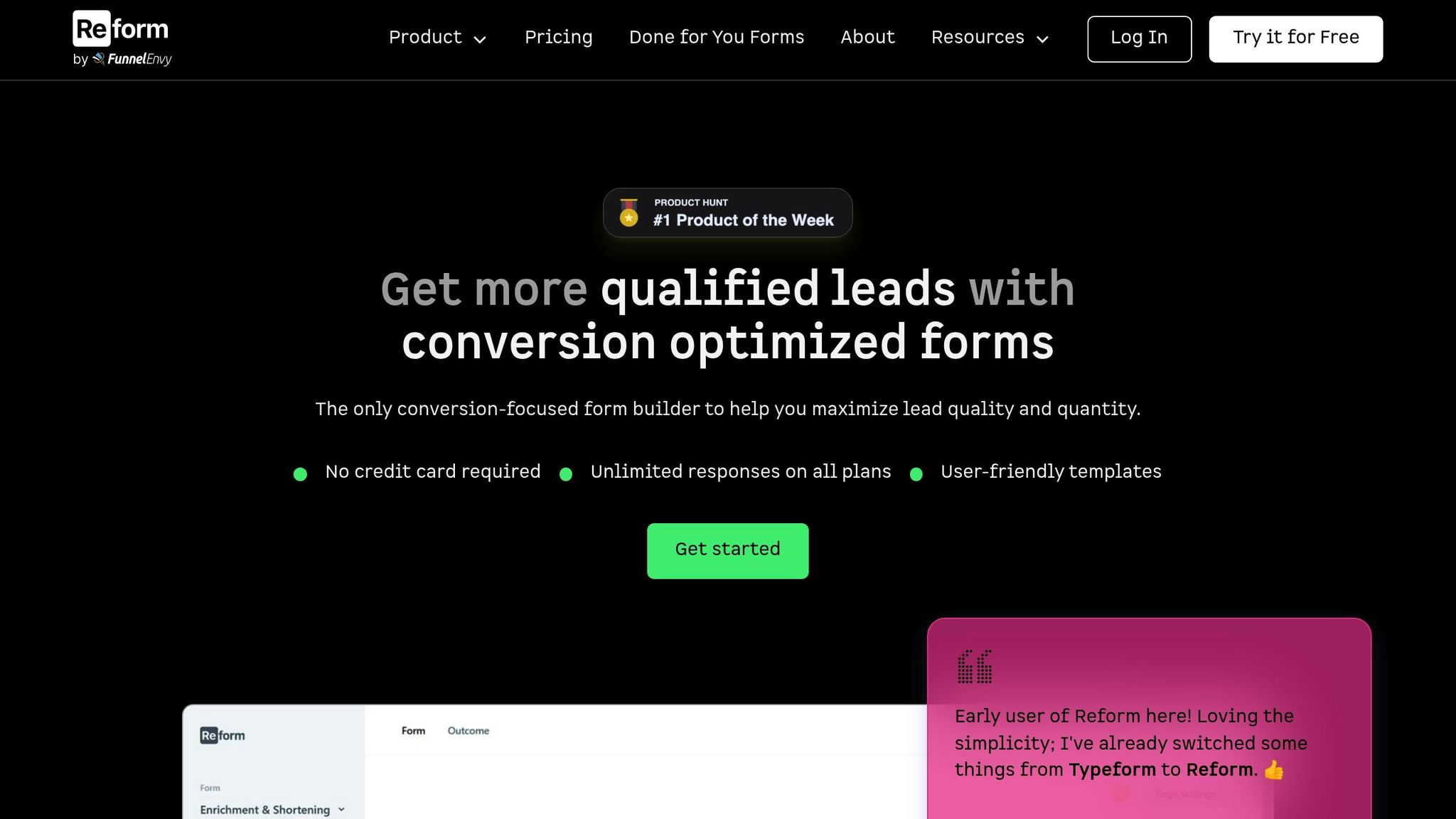Time-Decay vs. Linear Attribution: Key Differences

Choosing the right attribution model is crucial for understanding which marketing efforts drive conversions. Here's a quick breakdown of two popular models:
- Linear Attribution: Distributes equal credit across all touchpoints in a customer’s journey. Ideal for short sales cycles and straightforward campaigns.
- Time-Decay Attribution: Assigns more credit to recent interactions, reflecting their higher influence on conversions. Best suited for longer, complex customer journeys, like B2B sales.
Quick Comparison
| Factor | Linear Attribution | Time-Decay Attribution |
|---|---|---|
| Credit Distribution | Equal across all touchpoints | More weight to recent touchpoints |
| Sales Cycle Fit | Short cycles, simple journeys | Long cycles, multi-stage journeys |
| Ease of Use | Simple to implement | Requires customization of decay rates |
| Best For | Broad engagement campaigns | Recent interactions influencing conversions |
| Limitations | May undervalue key touchpoints | Can overemphasize recent actions |
Key takeaway: Use linear attribution for balanced insights in short, simple campaigns. Choose time-decay attribution for detailed insights in longer, decision-heavy journeys. Your choice depends on your sales cycle, customer behavior, and business needs.
Introduction to Attribution | Marketing Analytics for Beginners | Part-6
Linear Attribution Explained
In marketing automation, understanding linear attribution helps clarify how every customer interaction plays a role in driving conversions. Linear attribution assigns equal credit to each touchpoint in a customer's journey, recognizing that customers often interact with a brand many times before making a decision - sometimes as many as 20 to 500 times.
As the Indicative Team puts it:
"Linear attribution is a multi-touch attribution model which splits conversion credit equally across each touchpoint or interaction along a customers journey."
This model operates on the idea that every marketing channel contributes equally to guiding prospects toward conversion. Whether someone finds your brand through a Google search, engages with your social media posts, or clicks on a paid ad, linear attribution assumes that each interaction holds the same weight in influencing the final decision.
Let’s dive into how this model works and when it’s most effective.
How Linear Attribution Works
The mechanics of linear attribution are simple. It divides 100% of the conversion credit equally across all touchpoints a customer engages with, using the formula: 100% ÷ number of touchpoints = credit per touchpoint.
Here’s an example to illustrate. Imagine John, a potential customer, interacts with a SaaS company’s marketing in four ways: he clicks on a sponsored Facebook post, opens an email, clicks on a Google Ad, and finally visits the website directly to sign up for a free trial. With linear attribution, each of these four touchpoints gets 25% of the credit for John’s conversion.
This method provides a complete view by acknowledging that every interaction helps build awareness and trust, ultimately leading the customer to convert.
When to Use Linear Attribution
Now that we’ve covered how linear attribution works, let’s look at when it’s most effective. This model is particularly useful for businesses with short sales cycles and clear multi-channel engagement. As the MNTN Team explains:
"The linear attribution model gives every touchpoint in a customer journey equal credit in convincing a customer to buy from your company."
Its straightforward nature makes it appealing to small businesses and startups, as it doesn’t require complex data analysis to implement or interpret. For companies relying on lead generation forms, linear attribution can help identify which combination of touchpoints is most effective in moving prospects through the funnel.
However, linear attribution works best when all touchpoints have a similar impact on the buyer’s decision. If certain interactions - like a product demo or consultation - carry more weight in your sales process, you might need to explore other attribution models for more nuanced insights.
Time-Decay Attribution Explained
Building on the concept of linear attribution, which evenly distributes credit across all touchpoints, time-decay attribution shifts the focus by giving more weight to recent interactions. This approach recognizes that the closer a touchpoint is to the moment of conversion, the more influence it likely had. Dan Wakefield sums it up well:
"Time-decay attribution is a multi-touch attribution model that gives some credit to all the channels that led to your customer converting, with that amount of credit being less (decaying) the further back in time the channel was interacted with."
This model reflects the reality that customer intent tends to peak just before a conversion. By assigning greater credit to touchpoints nearer to the conversion event and gradually reducing credit for earlier interactions, time-decay attribution aligns with how most purchase decisions unfold.
How Time-Decay Attribution Works
The core idea behind time-decay attribution is straightforward: the closer an interaction is to the conversion, the more credit it receives. Using a decay function, this model prioritizes recent touchpoints while still acknowledging the role of earlier ones.
Here's an example: imagine a customer’s journey involves clicking on a digital ad, visiting your website a week later, and then clicking on a retargeting ad two days before making a purchase. Under time-decay attribution, the retargeting ad would receive the most credit, the website visit would get moderate credit, and the initial ad click would receive the least.
Consider the case of Growth Method, a SaaS company tracking a customer named John. John first discovered Growth Method through a social media ad, received a promotional email a week later, and two weeks afterward signed up for a trial via a Google search. With time-decay attribution, the Google search (SEO) channel would get the highest credit, the email marketing effort would receive moderate credit, and the social media ad would receive the least.
The model often relies on a "half-life" approach, where touchpoints lose a certain percentage of influence over predefined time intervals. This method ensures that contributions from earlier interactions are not completely disregarded but are appropriately weighted based on their timing.
When to Use Time-Decay Attribution
Time-decay attribution is particularly useful for businesses with longer sales cycles and intricate customer journeys. It shines in B2B settings, where decisions often take weeks or even months. Research from DemandGen highlights that 71% of B2B buyers engage with multiple content assets before making a purchase, making it essential to identify which touchpoints are driving final conversions.
This model is especially effective at highlighting mid-funnel activities, which are often overlooked by other attribution methods. When customers interact with various touchpoints over an extended period, time-decay attribution helps pinpoint the recent efforts that are most effective in pushing prospects toward conversion.
For example, if your business experiences customer journeys that span several weeks, starting with awareness campaigns and progressing through consideration stages, time-decay attribution can provide clarity. Touchpoints like content marketing, personalized outreach, or self-service tools play distinct roles based on when they occur, and this model ensures they are credited accordingly.
It’s also ideal for campaigns where recent engagement signals high purchase intent. If customers typically convert shortly after downloading a product demo or scheduling a consultation, time-decay attribution ensures these critical actions are weighted appropriately.
To get the most out of this model, tailor the decay rate to your sales cycle. For sales cycles lasting two months or more, consider setting a longer half-life - around 30 to 45 days - to ensure early touchpoints retain some credit while still prioritizing recent, high-impact interactions.
sbb-itb-5f36581
Time-Decay vs Linear Attribution: Main Differences
Understanding the differences between time-decay and linear attribution helps marketers refine their strategies and allocate resources more effectively. Linear attribution gives equal credit to every touchpoint in the customer journey, treating the first interaction and the final click before conversion with the same level of importance. On the other hand, time-decay attribution prioritizes interactions closer to the point of purchase, assigning more weight to recent touchpoints.
Time-Decay vs Linear Attribution Comparison Table
| Factor | Linear Attribution | Time-Decay Attribution |
|---|---|---|
| Credit Distribution | Equal credit to all touchpoints | More credit to recent touchpoints |
| Implementation Complexity | Easy to set up and understand | Requires customization of decay rates |
| Customer Journey Fit | Shorter sales cycles and simple journeys | Longer sales cycles and complex B2B journeys |
| Accuracy | Balanced view of channel performance | Reflects recent marketing impact more accurately |
| Ease of Interpretation | Simple and straightforward | Offers a detailed, nuanced perspective |
| Best Use Cases | Small businesses, startups, multi-channel campaigns | B2B companies, account-based marketing, extended decision cycles |
Pros and Cons of Each Model
Linear attribution is straightforward, offering equal weight to all touchpoints. This simplicity makes it an appealing choice for small businesses and startups. It provides a balanced view of how different marketing channels contribute throughout the funnel.
However, as the Adobe Experience Cloud Team explains:
"Linear attribution is a simple multi-source attribution model that aims to identify all key touchpoints relevant in driving a purchase and assign equal weight to each one. But if some interactions were more important than others, it won't reveal the most influential ones."
This equal weighting can dilute the importance of critical touchpoints, making it less suitable for longer or more complex sales cycles.
In contrast, time-decay attribution offers a more detailed approach. As Tracy Ng, Senior Content Executive at TrueProfit, puts it:
"Time decay attribution is a marketing attribution model that assigns more credit to interactions that happen closer to the conversion event."
This model highlights how recent interactions drive conversions, making it highly adaptable for various business goals and sales cycles. It’s especially useful for identifying the impact of mid-funnel marketing efforts.
However, time-decay attribution has its limitations. It can overemphasize recent interactions, potentially undervaluing earlier touchpoints. This can lead to skewed insights in complex sales processes or for businesses with very short sales cycles.
When choosing an attribution model, consider your sales cycle and business needs. Time-decay attribution is ideal for longer sales cycles - particularly in B2B scenarios, where 71% of buyers download multiple content assets during their research. Linear attribution, on the other hand, works well for companies with shorter and simpler customer journeys.
For those using time-decay attribution, customize the half-life to suit your sales cycle. For longer cycles (e.g., two months or more), a half-life of 30 to 45 days is a good starting point. For shorter B2C cycles, a period of around three days may be more appropriate. By tailoring your approach, you can select the attribution model that aligns best with your goals and sales processes.
How to Choose the Right Attribution Model
Now that we've covered linear and time-decay models, let's explore how to pick the right attribution model for your business. This decision isn't just another box to check - it’s about truly understanding how your marketing efforts drive results. As Ram Prabhakar, Head of Solutions and Content, puts it:
"Choosing the right attribution model isn't just another marketing decision - it's the foundation of understanding how your efforts lead to results."
The choice between time-decay and linear attribution depends on your customers' behavior and how they make purchasing decisions. Here's what to keep in mind.
Factors to Consider When Choosing an Attribution Model
Sales Cycle Length: The length of your sales cycle is key. Linear attribution works well for shorter cycles where decisions are made quickly. On the other hand, time-decay attribution is better suited for longer, multi-stage sales processes, which are often seen in B2B scenarios.
Customer Journey Complexity: The complexity of your customer journey also matters. If your journey is straightforward, linear attribution may be the way to go. However, for more intricate, multi-touch journeys, time-decay attribution offers the nuance needed to capture the full picture .
Business Goals: Your objectives should guide your model choice. For instance, linear attribution is ideal for campaigns aimed at broad engagement, while time-decay attribution works best when recent interactions play a critical role in driving conversions.
Data and Team Capabilities: Consider whether your systems and team can handle the analytical demands of a more complex model like time-decay attribution.
Testing and Experimentation: Testing is crucial. Experiment with different models to see which one aligns best with your goals as your data evolves .
Marketing Mix Diversity: If your campaigns span multiple channels with diverse goals, linear attribution helps you understand how each channel contributes. For campaigns where timing is critical, time-decay attribution can provide clearer insights into budget allocation.
Using Attribution Insights with Reform

Once you've chosen an attribution model, Reform can help you put those insights into action. With its real-time analytics and seamless integrations, Reform makes it simple to optimize your lead forms based on your model of choice.
For linear attribution, Reform allows you to spread your forms evenly across all marketing channels. Since linear attribution balances performance across touchpoints, you can place forms consistently in email campaigns, social media, content marketing, and paid ads. Reform’s A/B testing tools also make it easy to experiment with form designs while maintaining accurate tracking.
For time-decay attribution, Reform’s conditional routing is a game changer. This feature lets you adapt forms dynamically based on how users arrive at your site. For example, you can serve streamlined forms to visitors who recently interacted with an email campaign or retargeting ad, prioritizing those recent touchpoints.
Reform’s CRM and marketing automation integrations ensure seamless data flow, enabling you to track form conversions back to their original touchpoints. Its lead enrichment features automatically capture additional details - like referral sources and time spent on the page - which can be especially helpful for time-decay models.
The platform also tracks abandoned submissions, giving you insights into partial form completions and overall engagement. Plus, its headless forms capability ensures consistent tracking across different websites, landing pages, and campaigns, no matter which attribution model you’re using.
As Ram Prabhakar advises:
"The best approach is to understand your business needs, test models in real-world scenarios, and refine based on data. Don't be afraid to experiment - attribution is as much about learning as it is about optimizing."
Reform’s flexible design supports this experimental mindset, enabling you to tweak your strategies as your attribution insights grow and evolve.
Conclusion: Picking the Right Attribution Model
Deciding between time-decay and linear attribution comes down to what aligns best with your business needs. Each model shines in particular scenarios and serves distinct purposes.
Linear attribution works well for straightforward, short customer journeys where every touchpoint plays an equal role. Its balanced credit distribution makes it easy to interpret and apply across various marketing channels.
On the other hand, time-decay attribution focuses on recent interactions, making it ideal for longer, more complex sales processes. By giving more weight to the later stages of the journey, this model helps pinpoint which interactions are most influential, allowing for smarter budget allocation. These aren't just theoretical advantages - they deliver measurable results. For example, a financial services company in South Korea revamped its attribution model and saw an 80% improvement in channel accuracy, completely corrected traffic classification, a 42% increase in performance tracking, and 50% clearer regional reporting.
The choice ultimately depends on factors like the length of your sales cycle, the complexity of your customer journey, your team's analytical capabilities, and your specific business objectives. You might even find value in testing both models or blending elements from each to better suit your needs.
Key Takeaways
Attribution modeling isn’t a one-and-done decision - it’s an evolving process. Start by mapping your customer journey to identify key touchpoints, then select a model and evaluate its performance over time through A/B testing.
Linear attribution is best for campaigns with broad engagement goals, offering clear and simple insights. Time-decay attribution, on the other hand, provides the depth needed for intricate, multi-stage journeys. The right model depends entirely on your business context.
Above all, keep experimenting and refining your approach based on actual data. Whether you choose linear or time-decay attribution, the ultimate aim is the same: to uncover actionable insights that guide better budget decisions and reveal which touchpoints truly drive conversions.
FAQs
How can I decide if linear or time-decay attribution is better for my marketing strategy?
Choosing between linear attribution and time-decay attribution comes down to how your business prioritizes customer interactions.
If every touchpoint in the customer journey holds equal weight, linear attribution works well because it spreads credit evenly across all interactions. However, if recent interactions carry more influence - like in longer sales cycles or time-sensitive campaigns - time-decay attribution is a better fit.
To decide which model suits your needs, think about your marketing objectives, the length of your sales cycle, and how your audience typically interacts with your brand.
What are the limitations of time-decay attribution for short sales cycles?
Time-decay attribution focuses more on recent touchpoints, often downplaying the impact of earlier interactions. This can create a gap in understanding for businesses with short sales cycles or those relying on impulse purchases.
For companies operating in fast-paced sales environments, this model might miss the importance of those first customer interactions, leading to a skewed view of what truly influences conversions.
Can you combine linear and time-decay attribution models to better understand customer journeys?
Yes, you can blend linear and time-decay attribution models to get a more detailed understanding of customer journeys. This combination merges the even credit allocation of the linear model with the time-based emphasis of the time-decay model. The result? You get insights that highlight both the steady influence of touchpoints and the importance of recent interactions.
This mixed approach is especially helpful in pinpointing which channels and touchpoints contribute to conversions at various stages of the customer journey. With this knowledge, you can fine-tune your marketing strategies to perform better.
Related posts
Get new content delivered straight to your inbox

The Response
Updates on the Reform platform, insights on optimizing conversion rates, and tips to craft forms that convert.
Drive real results with form optimizations
Tested across hundreds of experiments, our strategies deliver a 215% lift in qualified leads for B2B and SaaS companies.


.webp)



